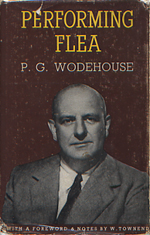
The Black Death was a bubonic plague pandemic occurring in Afro-Eurasia from 1346 to 1353. It is the most fatal pandemic recorded in human history, causing the death of 75–200 million people in Eurasia and North Africa, peaking in Europe from 1347 to 1351. Bubonic plague is caused by the bacterium Yersinia pestis, but it may also cause septicaemic or pneumonic plagues.

Plague is an infectious disease caused by the bacterium Yersinia pestis. Symptoms include fever, weakness and headache. Usually this begins one to seven days after exposure. In the bubonic form there is also swelling of lymph nodes, while in the septicemic form tissues may turn black and die, and in the pneumonic form shortness of breath, cough and chest pain may occur.

Yersinia pestis is a gram-negative, non-motile, rod-shaped, coccobacillus bacterium, without spores. It is a facultative anaerobic organism that can infect humans via the Oriental rat flea. It causes the disease plague, which takes three main forms: pneumonic, septicemic, and bubonic. There may be evidence suggesting Y. pestis originated in Europe in the Cucuteni–Trypillia culture and not in Asia as is more commonly believed.

Flea, the common name for the order Siphonaptera, includes 2,500 species of small flightless insects that survive as external parasites of mammals and birds. Fleas live by consuming blood, or hematophagy, from their hosts. Adult fleas grow to about 3 millimetres long, are usually brown, and have bodies that are "flattened" sideways or narrow, enabling them to move through their host's fur or feathers. They lack wings, but have strong claws preventing them from being dislodged, mouthparts adapted for piercing skin and sucking blood, and hind legs extremely well adapted for jumping. They are able to leap a distance of some 50 times their body length, a feat second only to jumps made by another group of insects, the superfamily of froghoppers. Flea larvae are worm-like with no limbs; they have chewing mouthparts and feed on organic debris left on their host's skin.
An explanation is a set of statements usually constructed to describe a set of facts which clarifies the causes, context, and consequences of those facts. This description may establish rules or laws, and may clarify the existing rules or laws in relation to any objects, or phenomena examined.

Hillel Slovak was an Israeli-American musician best known as the founding guitarist of the Los Angeles rock band Red Hot Chili Peppers, with whom he recorded two albums. His guitar work was rooted in funk and hard rock, and he often experimented with other genres including reggae and speed metal. He is considered to have been a major influence on the Red Hot Chili Peppers' early sound.

A flea market is a type of street market that provides space for vendors to sell previously-owned (second-hand) merchandise. This type of market is often seasonal. However, in recent years there has been the development of 'formal' and 'casual' markets which divides a fixed-style market (formal) with long-term leases and a seasonal-style market with short-term leases. Consistently, there tends to be an emphasis on sustainable consumption whereby items such as used goods, collectibles, antiques and vintage clothing can be purchased.

Performing Flea is a non-fiction book, based on a series of letters written by P. G. Wodehouse to William Townend, a friend of Wodehouse's since their schooldays together at Dulwich College. It was originally published in the United Kingdom on 9 October 1953 by Herbert Jenkins, London. The title alludes to a disparaging comment by the playwright Seán O'Casey, who, in a letter to The Daily Telegraph in July 1941, referring to Wodehouse's radio broadcasts from Berlin, wrote that "If England has any dignity left in the way of literature, she will forget for ever the pitiful antics of English literature's performing flea".

Murine typhus, also known as endemic typhus or flea-borne typhus, is a form of typhus transmitted by fleas, usually on rats, in contrast to epidemic typhus which is usually transmitted by lice. Murine typhus is an under-recognized entity, as it is often confused with viral illnesses. Most people who are infected do not realize that they have been bitten by fleas. Historically term "hunger-typhus" was used for instance in accounts by British POWs in Germany at the end of World War I when they described conditions in Germany.

The flea beetle is a small, jumping beetle of the leaf beetle family (Chrysomelidae), that makes up the tribe Alticini which is part of the subfamily Galerucinae. Historically the flea beetles were classified as their own subfamily.

The Flying Flea is a large family of light homebuilt aircraft first flown in 1933.

The cat flea is an extremely common parasitic insect whose principal host is the domestic cat, although a high proportion of the fleas found on dogs also belong to this species. This is despite the widespread existence of a separate and well-established "dog" flea, Ctenocephalides canis. Cat fleas can be found globally.
Abbott-Baynes Sailplanes Ltd. was a 1930s glider manufacturing company based at Wrecclesham, near Farnham, Surrey. It was founded as a subsidiary of E. D. Abbott Ltd in 1931 by L. E. Baynes and E. D. Abbott to build the Scud, a glider designed by Baynes in 1930, the prototype of which was built by Brant Aircraft Limited at Croydon Airport. The Scud was popular, and in 1932 a development of it, the Scud II model was launched. In 1935, a Scud II flown by Mungo Buxton took the British Height Record for a glider to 8,750 ft (2,666 m).

Bubonic plague is one of three types of plague caused by the plague bacterium. One to seven days after exposure to the bacteria, flu-like symptoms develop. These symptoms include fever, headaches, and vomiting, as well as swollen and painful lymph nodes occur in the area closest to where the bacteria entered the skin. Occasionally, the swollen lymph nodes, known as "buboes" pictured to the right, may break open.

The Ghost of a Flea is a miniature painting by the English poet, painter and printmaker William Blake, held in the Tate Gallery, London. Measuring only 8.42 by 6.3 inches, it is executed in a tempera mixture with gold, on a mahogany-type tropical hardwood panel. It was completed between 1819 and 1820, as part of a series depicting "Visionary Heads" commissioned by the watercolourist and astrologist John Varley (1778–1842). Fantastic, spiritual art was popular in Britain from around 1770 to 1830, and during this time Blake often worked on unearthly, supernatural panels to amuse and amaze his friends.

Flea Valley is a former settlement and mining camp in Butte County, California. It was located northeast of Magalia, at an elevation of 3684 feet. Flea Valley still appeared on USGS maps as of 1897.

Michael Peter Balzary, known professionally as Flea, is an Australian-American musician and actor. He is a founding member and the bassist of the rock band Red Hot Chili Peppers and has appeared on every album the band has released. Flea briefly appeared as the bassist for such bands as What Is This?, Fear, and Jane's Addiction. He has performed with rock supergroups Atoms for Peace, Antemasque, Pigface, and Rocket Juice & the Moon, and collaborated with the Mars Volta, Johnny Cash, Tom Waits, Alanis Morissette, and Young MC. Flea also performed live with Nirvana in 1993 playing the trumpet.
A rat flea is a parasite of rats.
Lord Flea was the stage name of Norman Byfield Thomas, a Jamaican mento musician credited with "helping start the calypso craze in U.S." With his band The Calypsonians, Flea toured America throughout the late 1950s, and released an album on the Capitol label. The band also performed in two calypso-related films.

Panorpida or Mecopterida is a proposed superorder of Endopterygota. The conjectured monophyly of the Panorpida is historically based on morphological evidence, namely the reduction or loss of the ovipositor and several internal characteristics, including a muscle connecting a pleuron and the first axillary sclerite at the base of the wing, various features of the larval maxilla and labium, and basal fusion of CuP and A1 veins in the hind wings. The monophyly of the Panorpida is supported by recent molecular data.
















